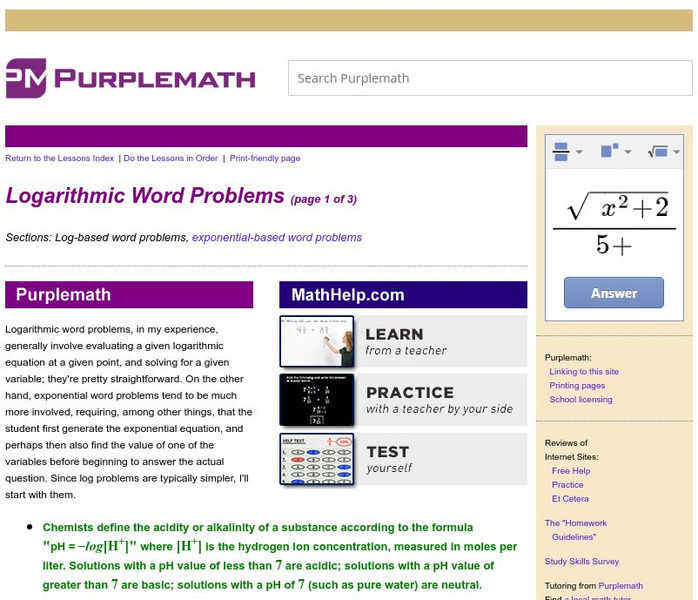Science Struck
Science Struck: Half Life in Nuclear Chemistry
Explains what is meant by the half-life of a radioactive element and how it is calculated.
Science Struck
Science Struck: List of Radioactive Elements
Learn about radioactivity, the different types of radioactive decay, isotopes, and half-life of a radioactive element. Includes a long chart listing radioactive elements, atomic number and mass number, decay type, and length of half-life.
University of Michigan
University of Michigan: Radioactivity in Nature
An interesting essay about the prevalence of radioactivity in nature, with chart showing where it is found and information about half lives.
University of Colorado
University of Colorado: Physics 2000: Halflife
An interactive tutorial on half life. Very readable and has a little extra for the advanced student.
Physics4kids
Physics4 Kids: Modern Physics: Releasing Particles
Explains basic information about radioactivity. Learn about half-life through text and video.
Science Struck
Science Struck: How Does Radioactive Decay Work?
Explains the processes of radioactive decay in primary and secondary modes.
Smithsonian Institution
National Museum of Natural History: Paleobiology: Absolute Dating
An explanation of radiometric or absolute dating of geological formations based on using the half-life of radioactive elements to figure out how old given rock layers are. A link on the left provides information about relative dating as...
Lawrence Berkeley National Laboratory
Berkeley Lab: Radioactivity
Overview of radioactivity, the process in which particles are emitted from nuclei as a result of nuclear instability.
Science Struck
Science Struck: Isotopes of Carbon
Describes the characteristics of carbon and what an isotope is. Presents a chart of carbon isotopes listing nuclide symbol, atomic weight, half-life, and nuclear spin, as well as a second chart listing radioactive carbon isotopes....
Purple Math
Purplemath: Logarithmic Word Problems
Logarithmic word problems generally involve evaluating a given logarithmic equation at a given point, and solving for a given variable; they're pretty straightforward. This resource contains worked examples to demonstrate the reasoning...



